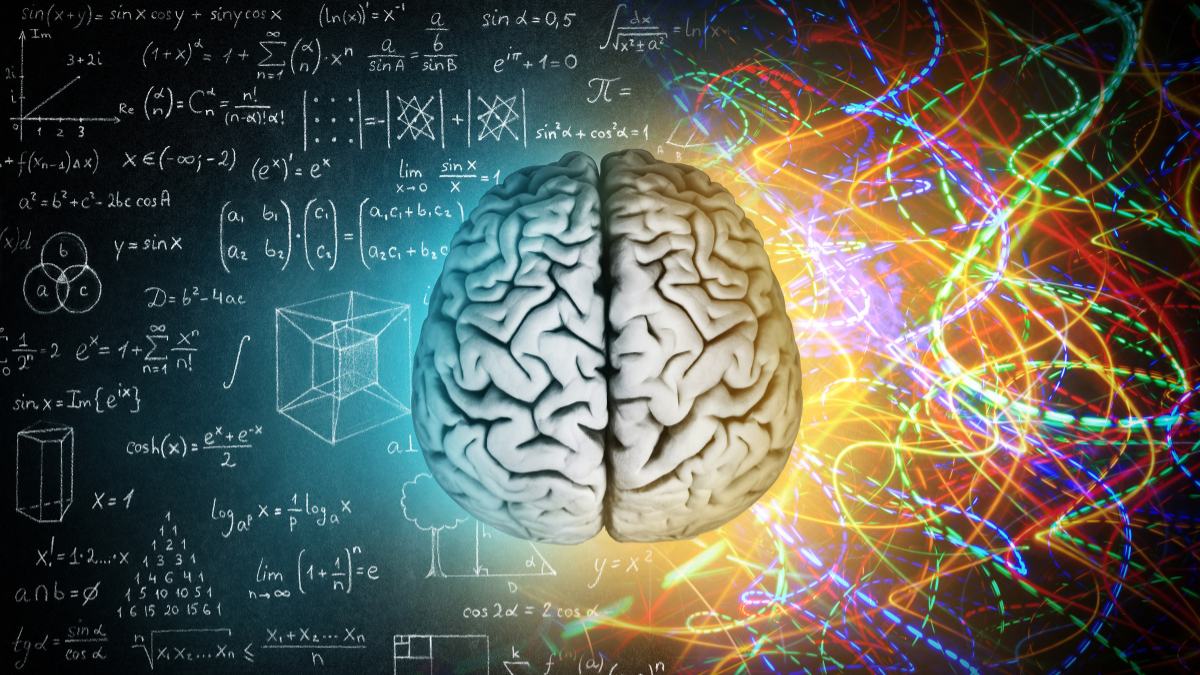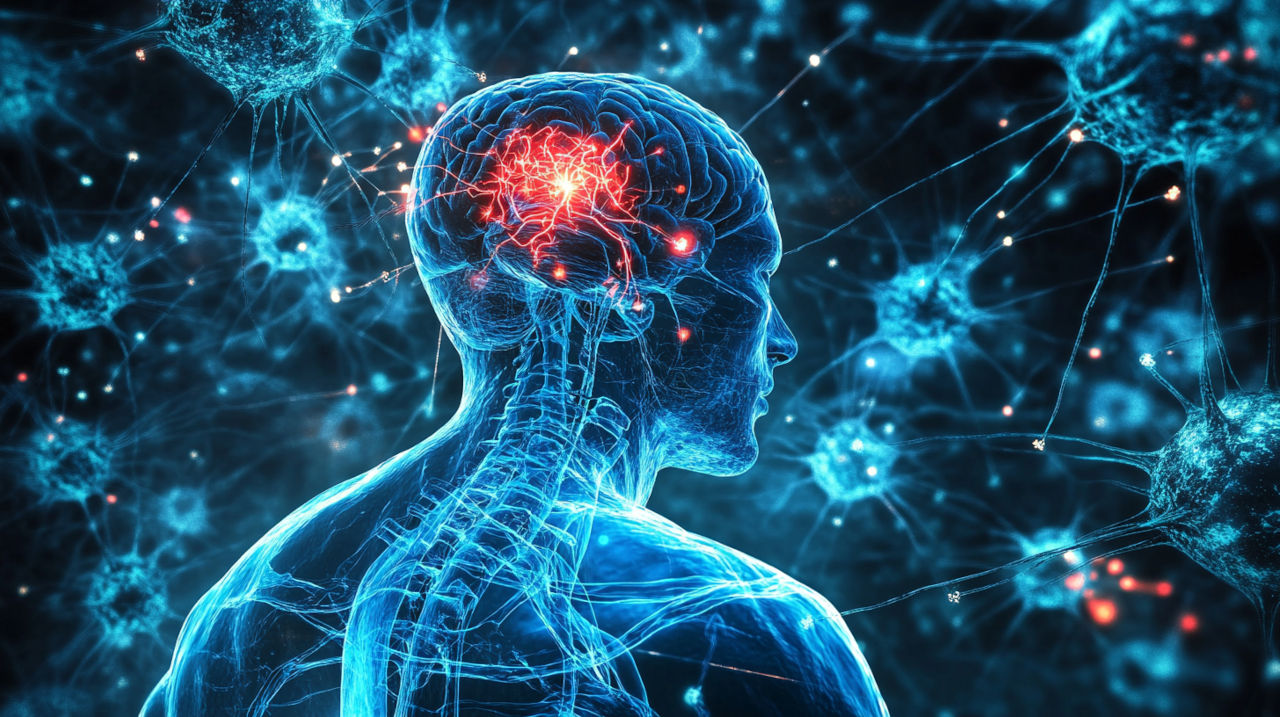All your thoughts, feelings, intuitions, and desires make themselves known in your brain activity. When attention shifts, your mood alters, or your energy levels adapt, your brain waves change in parallel.
That does not mean we can just look at a brain scan and know what someone is thinking, but by taking some time to study the brains of people as they do and think certain things, we can elucidate the neural signatures common to them.
Taking this path might help us get a better grasp of ADHD and brain waves—most diagnoses at present come from examining behaviour, which can be rather subjective. Brain activity could offer a more objective option.
What’s more, building a better understanding of the neuroscience of attention may lead to new methods for improving it. One promising route is ADHD brain training, combining both brain scanning technology such neurofeedback with games and activities.
The Neuroscience Of The ADHD Brain
Brain scans are not yet accurate and conclusive enough to be used to identify ADHD by themselves, but they are helpful tools for use alongside other methods, and the related research made possible offers interesting glimpses into the neuroscience of ADHD and attention.
A number of studies have found structural differences in the brains of people with ADHD. There are differences in grey matter volume, as well as subcortical regions like the amygdala and hippocampus.
Several studies have found that in those with ADHD, the brain matures on a longer time scale, with a nearly 3-year delay in the prefrontal regions largely responsible for attention, self-control, and planning.
The delayed development helps explain ADHD in younger people who tend to grow out of it, but it has less to say with regards to adult ADHD.
Brain regions don’t work in isolation, so while there are structural differences, this is far from the full picture. When the brain is buzzing with signals and communicating across its many networks, we find distinct patterns of waves.
These brain waves range from the very slow delta waves (0.5 – 4 Hz) seen during deep sleep, all the way up to gamma waves (30 – 100 Hz) during peak focus and performance. Here too we see unique signatures of ADHD and brain waves.
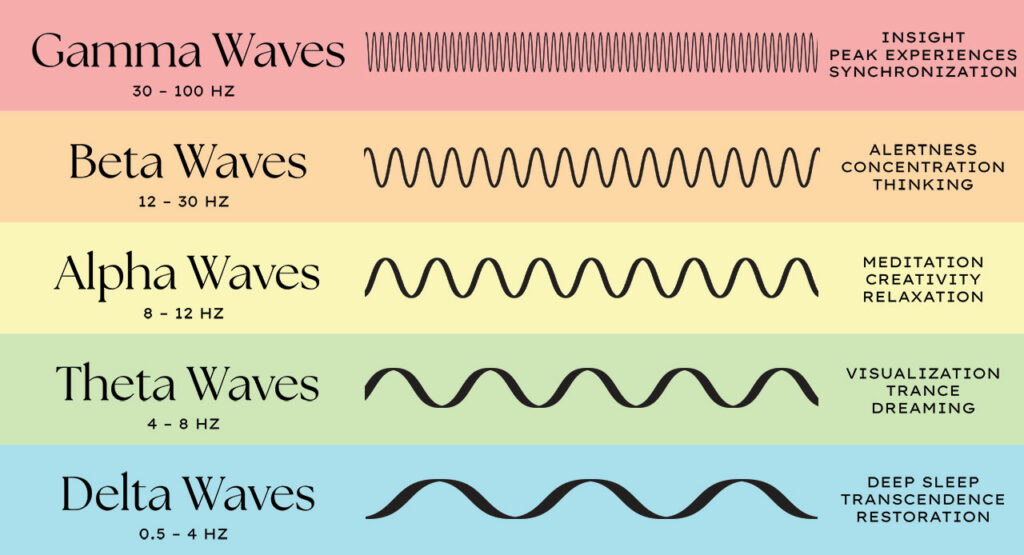
Want to try Neurofeedback without spending $1,000s of dollars at a professional clinic? I have previously reviewed over 10 different home neurofeedback devices but at the end of this post I’ll talk about the 3 wearable devices that I think are best for ADHD brain training.
ADHD and Brain Waves
What appears most significant with regard to ADHD and brain waves is the ratio between theta and beta waves.
Theta waves (4 – 8 Hz) are on the slower side, generally seen when we’re dreaming or in a trance-like state. Beta (12 – 30 Hz) are on the higher side, present when we’re alert and concentrating on something.
One study found there can be a higher ratio between theta and beta waves in people with ADHD, and that this theta/beta power ratio can correctly identify 166 of 185 people already diagnosed with it.
Outside of the research on ADHD, a large number of studies have linked the theta/beta ratio from the prefrontal regions to controlled attention.
More specifically, a low ratio (closer to 1:1) reflects enhanced control, but when the theta waves are relatively greater than the beta, attentional struggles occur.
For those with ADHD, or anyone who tends to struggle to keep their focus when they need to, finding ways to manage these theta and beta waves more effectively—to increase the ratio by lowering theta and raising beta—could prove valuable.
Can Neurofeedback Improve The ADHD Theta And Beta Imbalance?
Neurofeedback involves engaging with a task while receiving feedback about your brain activity so that you can adjust it.
The most common devices are EEG headsets that can pick up on the waves of electrical activity of the cortex—the outer region of the brain. Many devices now come with games and activities for you to engage in, so you can see how your brain activity changes as you adjust to different challenges.
The feedback helps you learn to shift those signals into a more desired state. Over time, you get better at it, making a more desirable state of mind achievable even when you’re engaged in other day-to-day activities.
Neurofeedback has been growing in popularity recently, as the technology has grown cheaper and more accurate, and as people increasingly look for ways to improve their mental health.
Neurofeedback for ADHD is a new and promising approach, with a large body of research already growing in its favour—a number of studies suggest that neurofeedback can be used to help treat symptoms of ADHD and restlessness.
One study had participants engage in a test of their spatial attention with neurofeedback, and found they learned to control their attention by regulating alpha synchrony.
“Alpha manipulation really was controlling people’s attention, even though they didn’t have any clear understanding of how they were doing it,” Dimitrios Pantazisone, one of the study’s authors, said to MIT.
Alpha brain waves (8 – 12 Hz) sit right in between the theta and beta bands mentioned earlier, it seems like all three bands—and the balance between them—might play significant roles in attentional control.
Home Neurofeedback Devices For ADHD Brain Training
Note: I use affiliate links that give you a discount on each device and I also receive a commission.
Today, there are lots of options available for inexpensive home neurofeedback training. They may not be as effective as professional neurofeedback training in a clinic but they cost a fraction of the price.
I often recommend to clients to get a QEEG analysis of their ADHD brain at a professional clinic because it can give them a better idea of what brain waves to train, and then you can do it more easily yourself at home.
Here are the 3 best options to consider if you want to try neurofeedback training:
1. Muse
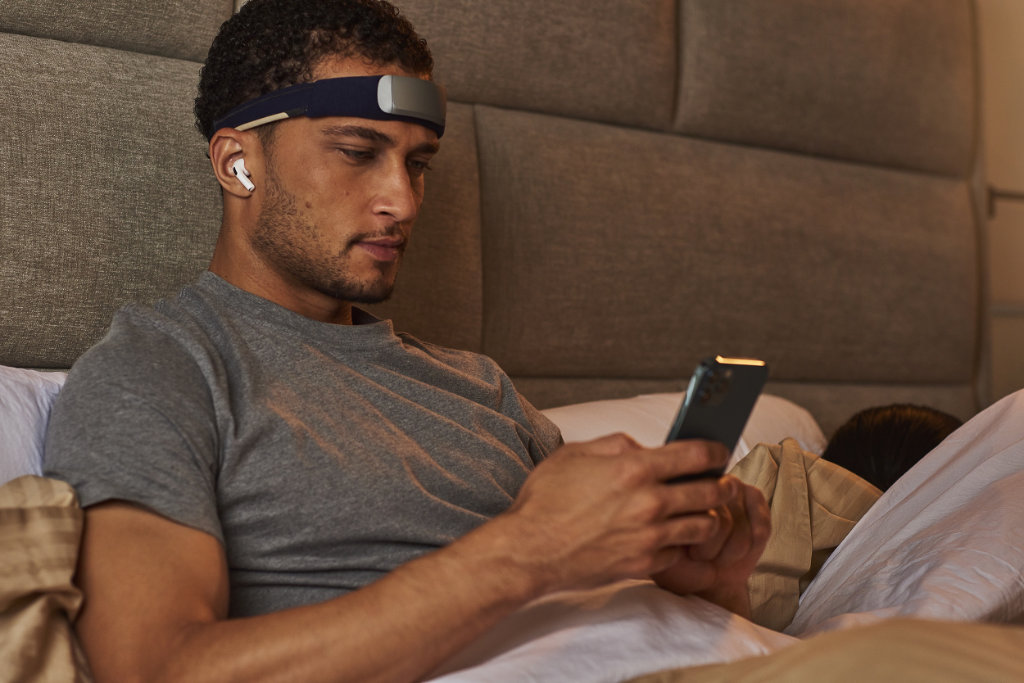
The Muse headband helps you meditate with neurofeedback-enhanced meditation sessions. It is excellent if you struggle with traditional meditation or you want something to help you relax and turn off your mind to sleep better at night.
This was the original wearable meditation headband launched in 2013, and they have by far the best collection of music and guided sessions of any home neurofeedback device.
As a bonus, if you want more professional-level neurofeedback training, they integrate with more advanced neurofeedback training platforms.
Price: $300
2. Sens.ai
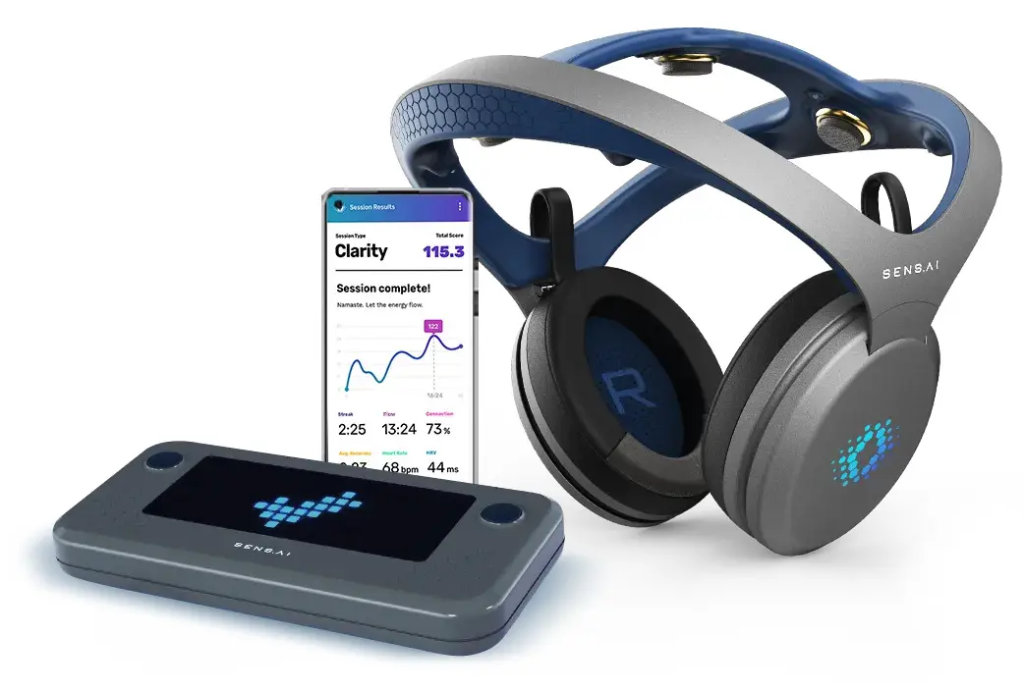
The Sens.ai is much more expensive than the Muse headband, but it offers the closest thing to professional neurofeedback training that you will find on a wearable consumer device.
What I like about Sens.ai is how they have gamified brain training and they have integrated headphones.
To do neurofeedback training with Sens.ai, you navigate through a series of missions that help you improve your focus, decrease stress and feel more relaxed.
Price: $1500
3. Mendi
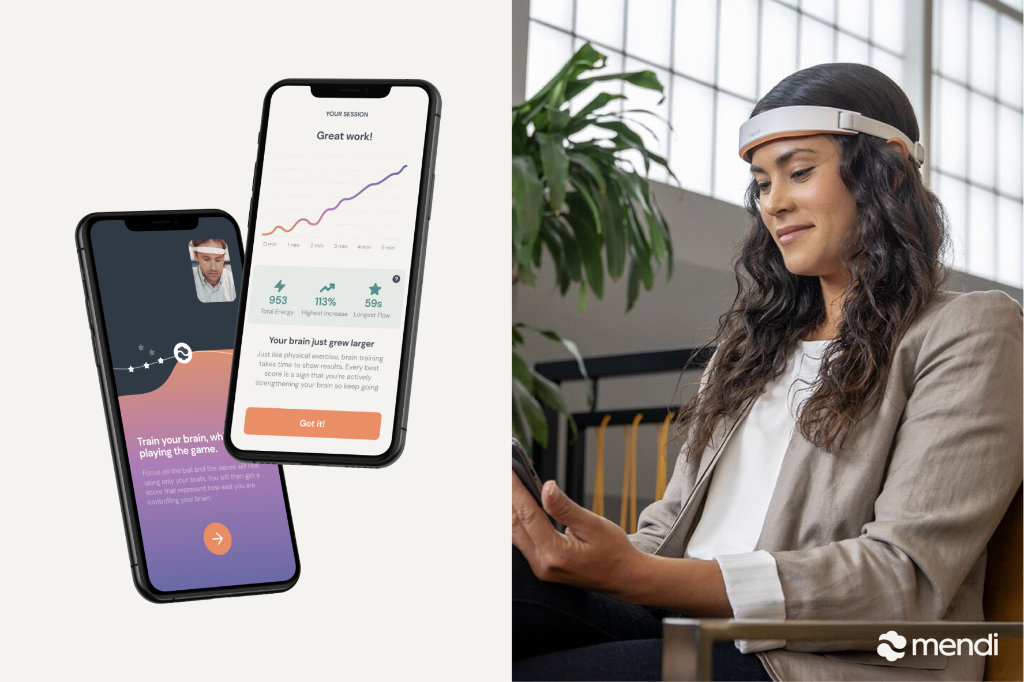
Similar to Muse, the Mendi is a comfortable brain-sensing headband. It is great for ADHD because you train your brain using fun and interactive games on your smartphone.
The technology behind Mendi is a little different than EEG, it’s called functional near-infrared spectroscopy) and it works by tracking blood flow in the brain.
People with ADHD tend to have reduced activity in the pre-frontal cortex and what the games in the Mendi app help you do is move blood flow into this area, which can help improve attention and executive functioning.
Price: $250
ADHD Brain Training For Better Focus And Attention
Science is still at work uncovering the mysterious ways the brain works, so we should expect new and exciting insights to come, helping us grasp at the underlying mechanisms of attention, memory, cognition, and all other features of the mind.
As of now, when it comes to attention and ADHD, there seems a significant role for the interplay of theta, alpha, and beta brain waves. How they push and pull, go silent or rise above, determines how well we focus and concentrate.
The exact dynamics between these brain waves might differ between each individual, but fortunately, neurofeedback offers a means of learning what waves your particular brain is struggling with.
Couple that with the right ADHD brain training regime, and just like a muscle, you can strengthen your mind and make it work for you rather than against you.
- 10 Tips, Tricks And Tools To Overcome ADHD Paralysis - March 19, 2025
- 10 Interesting Facts About Adult ADHD And Mental Health - March 18, 2025
- 15 Ways To Manage ADHD Without Meds By Biohacking Dopamine - February 14, 2025

